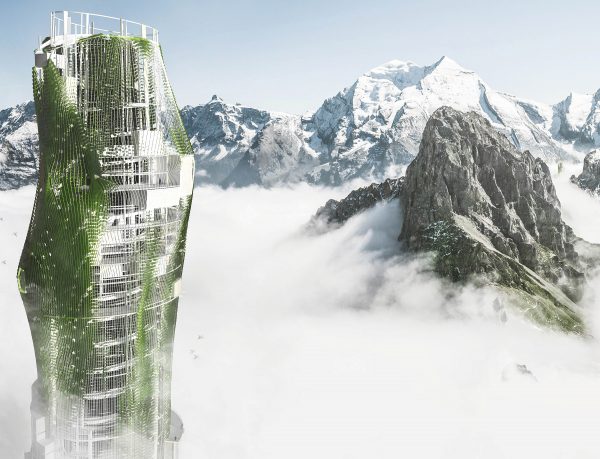Honorable Mention
2020 Skyscraper Competition
Johannes Schlusche, Paul Böhm, Raffael Grimm
Austria, Germany
A fair distribution of resources is the basis of a well-functioning society. Pipelines seem to be an important part of such a distribution in the context of energy, but are always the focus of political conflicts and often encounter local dislike. A densely developed pipeline network with its infrastructure is an important requirement for the global economic system based on oil trading. The climate crisis we are currently facing must be reason enough for us to rethink these systems to get independent of oil and gas, which at the same time requires the development of new ideas for the reuse of these pipelines.
The European continent has a vast network of existing oil and gas pipelines like the transalpine oil-pipeline which connects the Italian seaport Trieste with Germany, special the metropolitan area of Munich. It is 470 kilometers long and has a dimension of 100 centimeters each tube. The network primarily serves to supply the refineries in southern Germany but is also connected to other metropolises in Europe via the extensive infrastructure. The towers are designed to be connected to this specific distribution system for alternative use of the pipelines. New systems for renewable energy generation have been known for a long time, but finally, they have to be implemented on a large scale. Decentralization and focus on resources in the respective areas should be in the foreground. Algae as energy resources are in their beginnings and are seen as high potential. Extensive research work has dealt with algae as an energy source in recent decades. As a biofuel, they are up to 6 times more efficient than e.g. comparable fuels from corn or rapeseed.
The project focuses on the production of microalgae and their distribution using existing pipelines. The towers are positioned along the transalpine pipeline in a barren mountain landscape. Water is supplied from the surrounding mountain streams and springs, and can also be obtained from the Mediterranean using saltwater. New, empty pipes will be drawn into the existing pipeline. On the one hand, these serve to distribute the sea or mountain water, on the other hand, the microalgae produced can be transported both south to the seacoast and north. The energy for transport is to be obtained from environmentally-friendly hydropower.
The tower is circular and both constructed and designed from the inside out. The water is transported upwards via vertical pipes and distributed into the water tanks in the atrium. They are positioned at different heights. A total of 4 maintenance levels ensure that these tanks are easily accessible. The kilometer-long helical tubes, in which the microalgae grow, form the envelope of the atrium. They form the heart of the system and are responsible for the tower’s unique color scheme. Artificial light is said to support the natural in photosynthesis and to accelerate the growth process of algae. The remaining components of the photobioreactor, e.g. carbon dioxide tanks and pumps are positioned in the base of the tower. The tower is accessed via a spiral ramp that is docked to the outside of the algae tubes. It is supported statically by vertical steel frames, which are braced inwards via the four maintenance levels. The spiral staircase is also attached to these frames. The inner core is encased in a construct of platforms and capsule-like spaces. These rooms are used as laboratories and high-tech production facilities for the development of new algae materials. The outer skin is formed by a facade made of vertical thin and perforated tubes. These serve as breeding grounds for the natural algae which give the tower an iconic look.

















